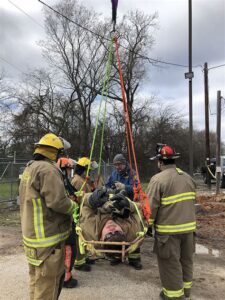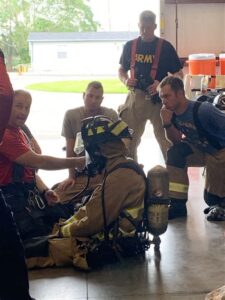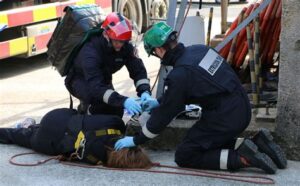Back to: Physical and Health Education JSS 2
Welcome to class!
In today’s class, we shall be talking about the steps involved in rescue operations. Please enjoy the class!
Steps Involved in Rescue Operations
Ever see a disaster movie unfold and think, “I could do that”? Well, maybe not exactly like in the movies (think Hollywood magic), but understanding the steps involved in a rescue operation can equip you with valuable knowledge and skills in real-life emergencies.
This isn’t just about heroism; it’s about being prepared and potentially saving lives, including your own. So, grab your metaphorical backpack and let’s dive into the world of rescue!
Phase 1: Assess the Situation

Before jumping headfirst into the fray,冷静下来!冷静!冷静!(That’s “stay calm” in Mandarin!)
Safety First: Your well-being is paramount. If the situation poses an immediate threat to you, don’t hesitate to move to safety and call for help. Remember, you can’t help others if you’re incapacitated.
Size Up the Scene: Quickly grasp the situation’s nature. Is it a fire, a car accident, a collapsed building? How many people are involved? Are there any immediate dangers like falling debris or hazardous materials?
Phase 2: Secure the Environment
Now that you’ve got the lay of the land, it’s time to minimize further harm.
Establish a Perimeter: Depending on the situation, this could involve using caution tape or cones to create a safe zone for rescuers and keep onlookers at bay.
Control Hazards: If possible, turn off gas or electricity sources, extinguish small fires, and stabilize any unstable structures. Remember, your goal is to prevent the situation from worsening.
Phase 3: Locate and Rescue Victims

This is where the real action begins!
Search Methodically: Depending on the terrain and circumstances, different search patterns might be employed. A grid search is ideal for open areas, while a rope drag is more efficient in dense foliage.
Utilize Technology: Search and rescue dogs can sniff out survivors buried under debris, while drones can provide aerial views of large areas. Remember, every tool at your disposal can increase your chances of finding someone alive.
Phase 4: Provide First Aid and Evacuation

Once you’ve found the victims, it’s time to prioritize their well-being.
Triage: Quickly assess each victim’s injuries and determine the order of treatment based on their severity. Remember, the ABCs (Airway, Breathing, Circulation) are your guiding principles.
Administer First Aid: Depending on your training and the situation, this could involve basic first aid like stopping bleeding or applying CPR. If you’re unsure, prioritize stabilizing the victim and calling for professional medical help immediately.
Safe Evacuation: Carefully remove the victims from the danger zone, ensuring their comfort and stability. Use stretchers or other appropriate equipment if necessary.
Remember: These are just the general steps, and the specific actions will vary depending on the type of rescue operation.
By understanding these steps and staying informed, you can be a valuable asset in any emergency situation. Remember, even small actions can make a big difference in saving lives. So, go forth, conquer calamity, and be the hero you were meant to be!
We have come to the end of today’s class. I hope you enjoyed the class!
In the next class, we shall be discussing Meaning of school health programme.
In case you require further assistance or have any questions, feel free to ask in the comment section below, and trust us to respond as soon as possible. Cheers!
Question Time:
Imagine you’re part of a rescue team searching for lost hikers in mountainous terrain. Discuss the different search patterns you might employ and the factors influencing your choice.
